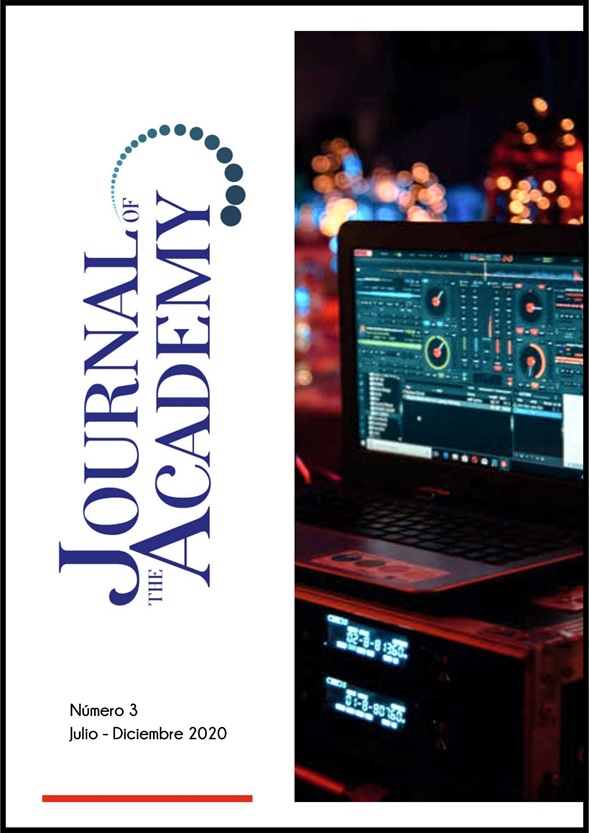Jesus 'calendar of Nazareth
DOI:
https://doi.org/10.47058/joa3.8Keywords:
Jewish calendar, crucifixion, historical Jesus, new moons, dataAbstract
The purpose of this document is to propound the use of other ways to determine ancient dates such as the Passover of crucifixion, and proposes new bases of the Jewish calendar. For this, it is proposed to use another way to determine New moons and the intercalation of a thirteen month, in order to test the written statements in ancient texts about testimonies of Jesus of Nazareth. The results lead to confirm the date of crucifixion, and to suggest that Jesus was based on a different calendar from those of his time. That calendar is rediscovered due to a close relationship between the lunar movement and its rest days during his life. He observed New moons according to lunar phases proclaimed by the Court of the ancient ritual of the Second Temple, and he kept the seventh day in a lunar form.
Downloads
References
Ajdler, J. Jean (2015). A Short History of the Jewish Fixed Calendar: The Origin of the Molad. Hakira, the Flatbush Journal of Jewish Law and Throat, 133-190.
Alvarez, Cristhian. (2011). ¿23 de Septiembre o 22 de Octubre? Xápis, 3-19.
Bacchiocchi, Samuele. (1980). Reposo Divino para la Inquietud humana. Michigan.
Ben-Dov, Jonathan. (2008). Head of All Years: Astronomy and Calendars at Qumran in Their Ancient Context. Leiden, Boston: Brill.
(2012). Lunar Calendars at Qumran?: A Comparative and Ideological Study. En Living the Lunar Calendar, 173-190.
Bonavoglia, Paolo. (2000). Eclissi e Calendari. Recuperado el 30 de julio de 2019, de Calendario Perpetuo: http://astro.bonavoglia.eu/
Cantera, F.; Iglesias, M. (2009). Sagrada Biblia, versión crítica sobre los textos hebreo, arameo y griego. Madrid: Biblioteca de Autores Cristianos.
Carabias, Ana María. (2012). Salamanca y la medida del tiempo. Salamanca: Universidad de Salamanca.
Castillo, Samuel. (2001). Equivalencia entre el Calendario Lunar y el Calendario Gregoriano. Theoría, 10, 33-37.
Espenak, Fred. (2012). astropixels. Recuperado el 30 de septiembre de 2016, de http://www.astropixels.com/
Espenak, Fred; Meeus, Jean. (Enero de 2009). Five Millennium Catalog of Solar Eclipses: –1999 to+3000 (2000 BCE to 3000 CE)—Revised. Recuperado el 4 de septiembre de 2019, de NASA ECLIPSE WEB SITE: https://eclipse.gsfc.nasa.gov/SEpubs/5MCSE.html
Fotheringham, John. (1934). The Evidence of Astronomy and Technical Chronology for the Date of the Crucifixion. Journal of Theological Studies, 146-162.
García, S. A. (1998). La datación histórica. Navarra: EUNSA, Ediciones Universidad de Navarra.
Humphhreys, Colin. (2011). The mystery of the last supper. Reconstructing the final Days of Jesus. Cambridge: University.
Humphreys, Colin; Waddington, W.G. (1983). Dating the Crucifixion. Nature, 743-46.
(1992). The jewish calendar, a lunar eclipse and the date of Christ’s Crucifixion. Tyndale Bulletin 43.2, 331-351.
(2017). Solar eclipse of 1207 BC helps to date pharaohs. Recuperado el 14 de septiembre de 2019, de Astronomy & Geophysics, V 58, N° 5: https://academic.oup.com/astrogeo/article/58/5/5.39/4159289
Jaubert, Annie. (1965). The Date of the Last Supper. Nueva York: Alba House.
Kontakt, (s.f.). beda. Recuperado el 30 de noviembre de 2016, de https://www.beda.cz/~jirkaj/seasons/
Landman, Isaac. (1901-1906). The Universal Jewish Encyclopedia (Vols. 5, sec. Holidays). New York: Ktav Publishing House.
Lull, José. (2006). La Astronomía en el antiguo Egipto. Valencia: Universidad de Valencia.
Meeus, Jean. (1985). Astronomía Con il Computer. Milano: Hoepli.
Meier, John. (1998). Un judío Marginal. Nueva Visión del Jesús histórico. Tomo I. Navarra: Verbo Divino.
Nasa, C. (s.f.). Recuperado el 3 de julio de 2019, de https://eclipse.gsfc.nasa.gov/eclipse.html
Piñero, Antonio. (2006). Guía para entender el Nuevo Testamento. Madrid: Trotta.
(2009). Todos los Evangelios. Traducción íntegra de las lenguas originales de todos los textos evangélicos conocidos. Madrid: digital Titivillus.
Pratt, John. (1991). Newton's Date for the Crucifixion. Royal Astronomical Society, 32 Núm. 3, 301–304.
Ratzinger, Joseph. (2011). Jesús de Nazaret II. Vaticana: Morgan Editores.
Roitman, Adolfo. (2010). Biblia, exégesis y religión. Una Lectura crítico-histórica del judaísmo. Navarra: Verbo Divino.
(Diciembre de 2013). Juan Bautista, Jesús, Pablo y la Comunidad de Qumrán, en Cuadernos Judaicos. Revista Académica de la Universidad de Chile. Recuperado el 14 de septiembre de 2019, de https://cuadernosjudaicos.uchile.cl/
Sanders, E. P. (2000). La figura histórica de Jesús. Navarra: Verbo Divino.
(2004). Jesús y el Judaísmo. (J. Pérez, Trad.) Madrid: Trotta.
Saulnier, Stéphanier. (2012). Calendrical Variations in Second Temple Judaism. Leiden - Boston: Brill
.
Segura, Wenceslao. (2017). Calendario Hebreo. España, WT Ediciones.
Schaefer, Bradley. (1990, March). Lunar visibility and the crucifixión. Royal Astronomical Society, 31(1), 53-67.
Schiffman, L. H.; VanderKam, J.C. (2000). Calendars and Mishmarot. En Encyclopedia of the Dead Sea Scrolls (Vol. I). Oxford University Press.
Velasco, J. Martín. (1978). Introducción a la Fenomenología de la Religión. Madrid: Ediciones Cristiandad.
Downloads
Published
Issue
Section
License

This work is licensed under a Creative Commons Attribution-NonCommercial-ShareAlike 4.0 International License.



